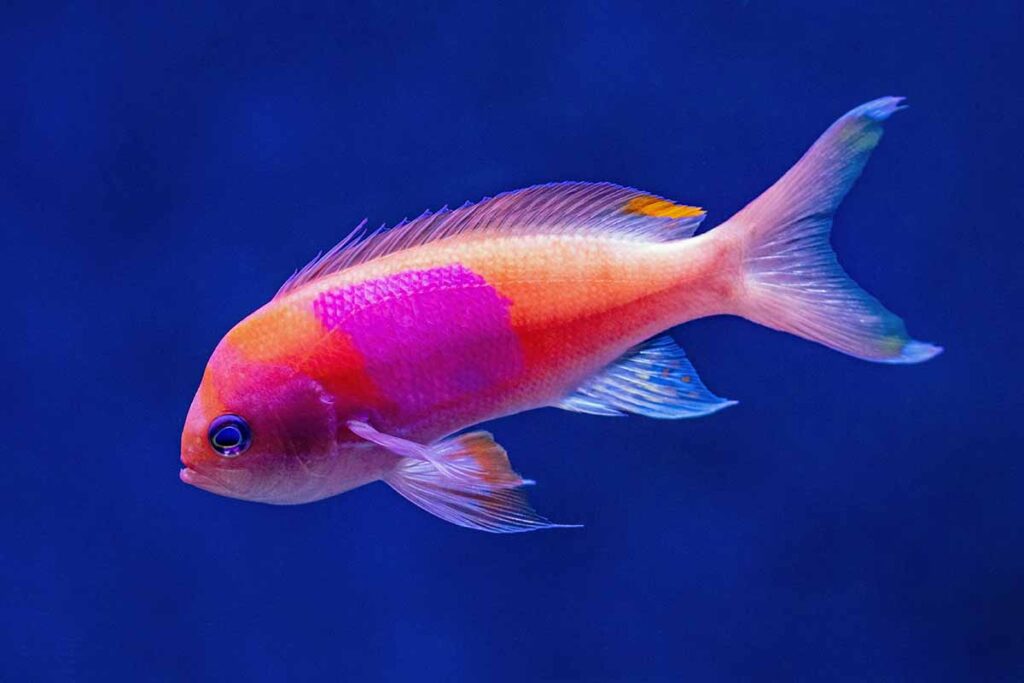Aquarium hobbyists often seek vibrant and colorful fish to enhance the aesthetics of their aquatic environments. Among the myriad options available, red fish stand out for their striking hues and captivating presence. Let’s delve into the captivating world of aquarium red fish, exploring popular choices, in-depth details often missed, and essential considerations for their care.
An Overview to Aquarium Red Fish
Aquarium red fish, known for their vibrant colors, include popular species like Betta Splendens, Swordtails, Platy Fish, Tetras, and Discus Fish. These fish add beauty and dynamism to tanks, with their fiery red hues captivating enthusiasts worldwide. Proper care involves maintaining optimal water conditions, providing adequate filtration, and offering a balanced diet tailored to each species’ needs. Aquarium red fish enrich freshwater setups with their stunning colors and unique characteristics, enhancing the allure of aquatic environments for hobbyists and aquarists alike.
Delving into Data: Stats and Scales Beyond the Surface
Understanding the ecological roles and conservation needs of our finned friends requires venturing beyond the superficial. A 2021 study published in the “Journal of Fish Biology” reveals that red fish species often occupy specific water niches. Some, like the scarlet badis (Dario dario), prefer acidic environments, while others, like the red-tailed black shark (Epalzeorhynchus bicolor), flourish in neutral to slightly alkaline conditions. This data isn’t just academic; it’s crucial for creating optimal aquarium environments that cater to the specific needs of your red companions.
Popular Red Fish Personalities
The Social Showstoppers
- Cherry Barbs (Puntius titteya): These zippy shoaling fish boast a fiery cherry red with contrasting black stripes, adding a burst of life to mid-water levels. Their peaceful nature and small size (2-2.5 inches) make them ideal for community tanks. Bonus fact: Studies suggest cherry barbs exhibit “cultural transmission,” learning foraging behaviors from older generations! (ref: Brown, C., et al. 2011. Social learning in fishes: neuroethological mechanisms for adaptive tradition).
- Ember Tetras (Hyphessobrycon amandae): These tiny jewels (0.8 inches) shimmer with an ember-like glow, perfect for nano tanks. Their peaceful nature and schooling behavior create mesmerizing, shimmering clouds. Did you know? Ember tetras exhibit fascinating shoaling dynamics, with individuals adjusting their position based on surrounding fish for optimized predator avoidance! (ref: Schooling fish avoid predators by trading off collective safety and reduced access to food. Proc. R. Soc. B 275: 1565–1571).
The Bold and Beautiful
- Red Bettas (Betta splendens): These majestic fighters, known for their flowing fins and fiery personalities, require solitary tanks due to their territorial nature. Intriguing fact: Male bettas engage in elaborate “flare displays” to intimidate rivals, expanding their gill covers and fins to appear larger. (ref: Gaster, JC Jr, and RC Fernald. 1995. Individual differences in the display behavior of Betta splendens. Behav. Ecol. 6: 348-354).
- Red Tail Black Sharks (Epalzeorhynchos bicolor): These striking fish with their contrasting scarlet tail and black body add a dramatic statement to larger tanks. However, their active nature and potential territoriality require careful tankmate selection. Lesser-known fact: Red tail black sharks are omnivores and require a varied diet that includes algae wafers and meaty foods. (ref: Rainbows in the Sky: The Complete Guide to Freshwater Aquarium Fish by George C. Blasiola Jr.).
Setting Up an Aquarium for Red Fish
Creating an ideal habitat for red fish involves careful consideration of tank size, water parameters, and décor elements.
- Tank Size and Specifications: Red fish, whether freshwater or saltwater, thrive in spacious environments that mimic their natural habitats. A larger tank provides ample swimming space and minimizes territorial disputes among fish.
- Water Conditions and Filtration: Maintaining stable water parameters is crucial for the health and well-being of red fish. Regular water testing and efficient filtration systems help ensure optimal water quality and clarity.
- Aquascaping and Decor: Aquarium décor plays a vital role in replicating the natural environment of red fish. Live plants, driftwood, and rocks create hiding spots and territorial boundaries, fostering a sense of security for the fish.
Feeding and Care for Red Fish
Feeding and caring for red fish in an aquarium requires attention to detail and a commitment to maintaining their health and well-being. Red fish, such as Red Gourami, Red Wag Swordtail, or Red Platies, are popular choices for aquarium enthusiasts due to their vibrant coloration and relatively easy care requirements.
Here are some guidelines for feeding and caring for red fish in an aquarium:
- Diet and Nutrition: Offering a diverse diet rich in protein and essential nutrients promotes vibrant colors and robust health in red fish. Regular feeding schedules and portion control help prevent overfeeding and maintain water quality.
- Maintenance and Cleaning: Routine aquarium maintenance, including water changes, gravel vacuuming, and filter maintenance, is essential for sustaining a healthy aquatic ecosystem. Monitoring water parameters and addressing any deviations promptly can prevent common health issues in red fish.
- Water Parameters: Red fish, like many other tropical fish species, are sensitive to water quality. Monitor and maintain appropriate water parameters such as temperature (typically 75-82°F or 24-28°C), pH level (around 6.5-7.5), ammonia, nitrite, and nitrate levels. Regular water testing and partial water changes are essential to keep the aquarium environment stable and healthy for your red fish.
- Feeding Schedule: Red fish are omnivores, meaning they eat both plant and animal matter. Provide a balanced diet for your red fish by offering a variety of high-quality flake, pellet, or freeze-dried foods designed for tropical fish. Additionally, supplement their diet with live or frozen foods such as bloodworms, brine shrimp, or daphnia to provide essential nutrients and enhance their natural feeding behaviors.
- Frequency and Quantity: Feed your red fish small amounts of food two to three times a day, only what they can consume within a few minutes. Overfeeding can lead to poor water quality, obesity, and other health issues. Monitor your fish during feeding times to ensure they are actively consuming the food and adjust the amount accordingly.
- Compatibility: When choosing tankmates for your red fish, consider their temperament and compatibility with other fish species. Avoid aggressive or fin-nipping fish that may stress or harm your red fish. Research the specific requirements and behavior of potential tankmates to ensure a harmonious aquarium community.
By following these guidelines for feeding and care, you can create a thriving aquarium environment for your red fish and enjoy their beauty and vibrant colors for years to come. Remember to stay attentive to your fish’s needs and provide a nurturing environment for their health and well-being.
Common Health Issues and How to Address Them
Common health issues can arise in aquarium red fish and addressing them promptly is crucial to maintaining their well-being. Here are some common health issues and steps to address them:
Ich (White Spot Disease)
- Symptoms: White spots resembling grains of salt on the fish’s body, fins, and gills. Fish may also exhibit rubbing against objects in the aquarium.
- Treatment: Increase the temperature of the aquarium to around 82-85°F (28-29°C) to speed up the life cycle of the parasite. Administer appropriate ich treatment medication as per the manufacturer’s instructions. As activated carbon can absorb the drug, remove it from the filter. Since the parasite spreads quickly, treat the entire aquarium.
Fin Rot
- Symptoms: Fins appear frayed, ragged, or discolored. In severe cases, the fins may deteriorate or fall off entirely.
- Treatment: Improve water quality through regular water changes and ensure proper filtration. Treat with antibacterial medications specifically designed to address fin rot. Remove any decaying organic matter from the aquarium.
Dropsy
- Symptoms: Swollen abdomen, scales sticking out like a pinecone, lethargy, loss of appetite.
- Treatment: Isolate the affected fish in a hospital tank. Treat with antibiotics to address bacterial infections. Improve water quality and ensure proper nutrition to boost the fish’s immune system.
Fungal Infections
- Symptoms: Cotton-like growths on the skin, fins, or mouth of the fish.
- Treatment: Treat with antifungal medications available at pet stores or fish supply shops. Improve water quality and maintain optimal aquarium conditions to prevent the spread of fungal infections.
Parasitic Infections
- Symptoms: Abnormal behavior, scratching against objects, visible parasites on the fish’s body or gills.
- Treatment: Identify the type of parasite and administer appropriate medication as directed. Quarantine affected fish to prevent the spread of parasites to other tankmates. Ensure thorough cleaning and disinfection of aquarium equipment to prevent reinfection.
Stress-related Issues
- Symptoms: Loss of appetite, hiding behavior, faded coloration, rapid breathing.
- Treatment: Identify and address the source of stress, such as poor water quality, overcrowding, aggressive tankmates, or inadequate habitat. Improve water parameters, provide adequate hiding places, and maintain a peaceful aquarium environment.
Ethical Considerations for Responsible Fishkeeping
As responsible fishkeepers, appreciating the complexities of red fish behavior and ecology goes hand-in-hand with ethical practices. Many popular red fish, like the blood parrot cichlid (Hybrid), are the result of unsustainable breeding practices that prioritize color over natural form and behavior.
Opting for ethically sourced and diverse species ensures the well-being of your aquatic companions and supports responsible aquaculture practices. Remember, every purchase we make has an impact, and by making informed choices, we can contribute to a brighter future for these captivating creatures.
Dive Deeper: Resources for the Curious Aquarist
This blog post is just the first chapter in your journey to truly understanding the hidden wonders of your red aquarium fish. If you’re yearning to delve deeper, consider these resources:
- Online Courses: The University of Florida’s “Tropical Fish Identification and Care” on edX provides an in-depth exploration of fish biology and husbandry.
- Scientific Journals: Immerse yourself in the fascinating world of academic research by exploring journals like “Journal of Fish Biology” and “Behavioural Ecology” to uncover cutting-edge insights into fish behavior and ecology.
- Conservation Organizations: Support organizations like the World Conservation Society and Aquarium Conservation Network to contribute to sustainable fishkeeping practices and ensure the well-being of wild fish populations.
By looking beyond the vibrant exteriors and delving into the hidden depths of their world, we discover a universe of wonder within our aquariums. With responsible practices and a thirst for knowledge, we can ensure our red finned friends not only survive but thrive, while becoming responsible stewards of their aquatic world. So, the next time you gaze upon your shimmering companions, remember, the journey has just begun.
Let their captivating colors be a gateway to a deeper understanding, a call to explore the hidden wonders they carry within their scales. With responsible choices and a curious mind, you can transform your aquarium into a thriving ecosystem, a microcosm of nature’s wonders, and a constant source of learning and connection to the fascinating world of red fish.
Conclusion
Aquarium red fish captivate enthusiasts with their vibrant colors and engaging behaviors. By understanding their care requirements and habitat preferences, aquarists can create thriving ecosystems that showcase the beauty of these captivating creatures.
FAQs
Q. Can red fish live with other species in the same aquarium?
A. Yes, red fish can coexist with compatible species in community tanks, provided adequate space and hiding spots are available.
Q. How often should I feed my red fish?
A. Red fish should be fed small portions 2-3 times daily, ensuring they consume all the food within a few minutes.
Q. Are red fish suitable for beginners?
A. Yes, many red fish species are beginner-friendly and can adapt to a variety of aquarium conditions with proper care.
Q. What should I do if my red fish shows signs of illness?
A. Monitor water parameters, isolate the affected fish if necessary, and seek advice from a qualified aquatic veterinarian or knowledgeable aquarist.
Q. Can red fish change color over time?
A. Yes, environmental factors, diet, and genetics can influence the coloration of red fish, leading to subtle changes over time.













